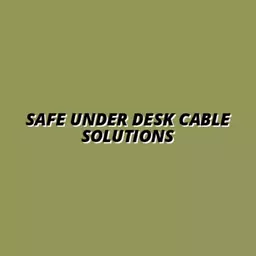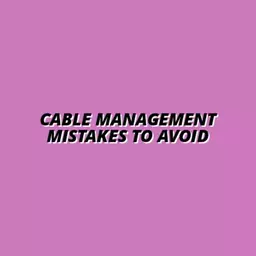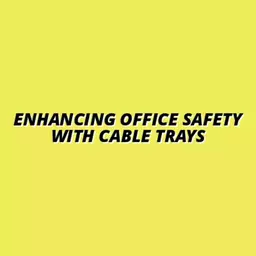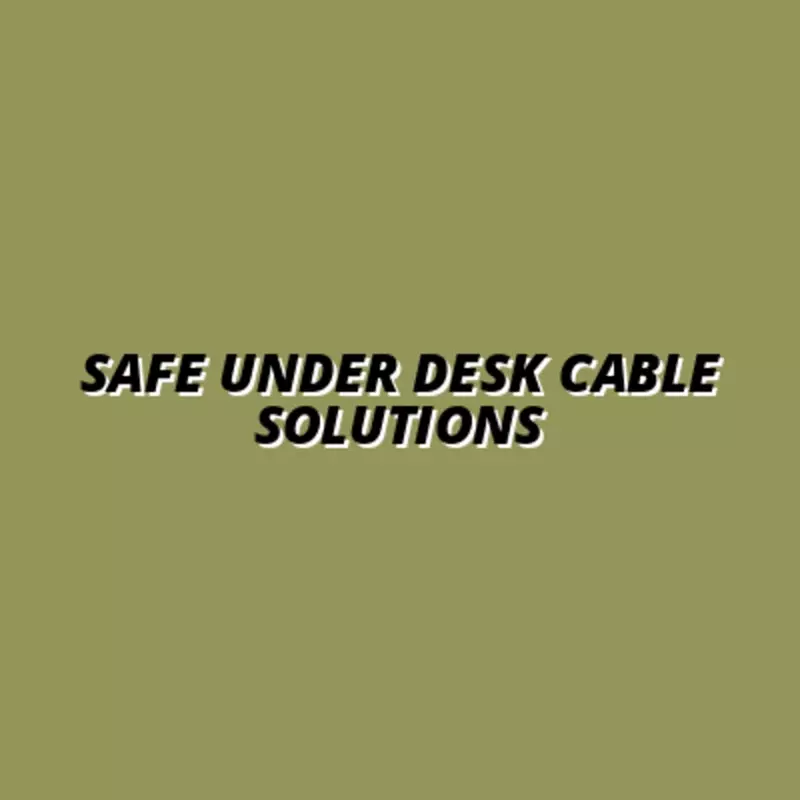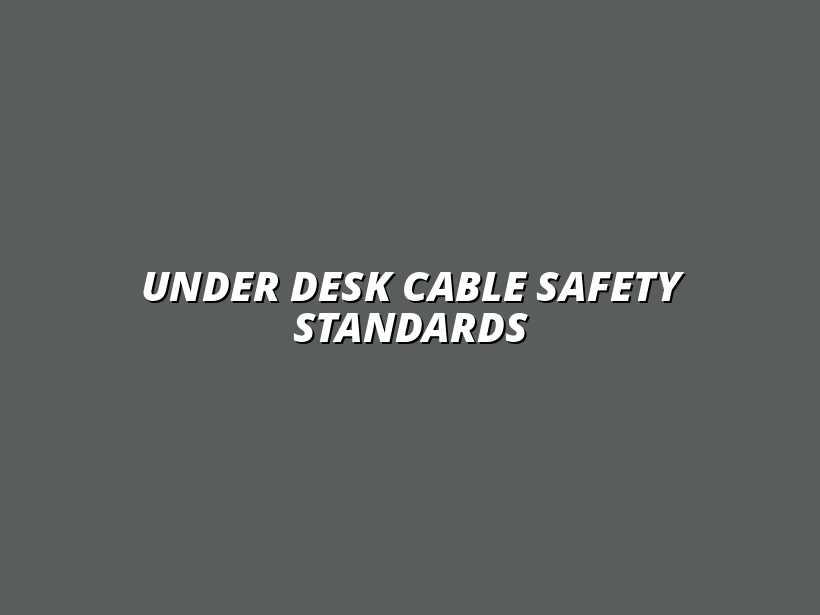
Under Desk Cable Safety Standards
In today’s fast-paced work environments, safety should never take a backseat, especially when it comes to cable management. With tangled cords posing serious risks, implementing safety standards is not just a recommendation—it's a necessity for a productive workspace.
What You Will Learn
- Understanding Key Standards: Familiarize yourself with essential safety guidelines like NEC, BS7671, and CE Marking for effective cable management.
- Organizations That Matter: Recognize the roles of OSHA and ANSI in establishing best practices for workplace safety and compliance.
- Risks Associated with Poor Management: Learn about the dangers of loose cables, including trip hazards and electrical fire risks, and how to mitigate them.
- Enhancing Workspace Aesthetics: Discover how proper cable management not only improves safety but also boosts the overall look and feel of your workspace.
- Practical Steps for Compliance: Implement actionable strategies such as regular assessments and investing in compliant cable management products to maintain a safe work environment.
Key Safety Standards and Organizations in Cable Management
Understanding the critical safety standards and organizations can greatly enhance workplace safety and efficiency in cable management.
Key Safety Standards
- NEC: Safe wiring practices for electrical installations.
- BS7671: Compliance with safety in electrical systems in the UK.
- CE Marking: Indicates products meet European safety requirements.
Organizations to Follow
- OSHA: Regulates workplace safety.
- ANSI: Develops consensus standards for safety and efficiency.
Common Risks Mitigated
- Trip Hazards: Organized cables reduce tripping risks.
- Electrical Fires: Proper management minimizes overheating hazards.
The Importance of Adhering to Safety Standards in Under Desk Cable Management
When it comes to under-desk cable management, adhering to safety standards is crucial. Not only do these guidelines help prevent accidents, but they also ensure a functional and aesthetic workspace. By understanding and implementing these safety regulations, you can create a safe environment that enhances productivity and organization.
In my journey with Under-Desk Tray Hub, I've seen how a clutter-free workspace can change a person's outlook on productivity. So, let’s explore some key safety standards related to under-desk cable management, including the National Electrical Code (NEC), BS7671, and CE Marking. These standards guide us in making informed decisions about cable management solutions. For further reading, check out this article on electrical safety with desk trays.
Understanding Cable Management Safety Standards and Regulations
The NEC primarily focuses on the installation of electrical wiring and equipment in the United States, while BS7671 serves a similar purpose in the UK. They provide guidelines that ensure electrical installations are safe and efficient. CE Marking indicates that a product meets the essential safety requirements of relevant European legislation. These standards play an essential role in promoting safety in our workspaces.
Here are some standards to keep in mind when managing cables under your desk:
- NEC: Covers safe wiring practices for electrical installations.
- BS7671: Ensures compliance with safety in electrical systems in the UK.
- CE Marking: Indicates products meet European safety requirements.
Here are some frequently asked questions about cable management safety standards:
-
What is NEC, and why is it important for cable management?
NEC (National Electrical Code) focuses on the safe installation of electrical wiring and equipment in the United States. Adhering to NEC guidelines ensures that electrical installations are safe and efficient, reducing the risk of electrical hazards. -
What is BS7671, and how does it relate to cable management?
BS7671 serves a similar purpose to NEC but in the UK. It provides guidelines for ensuring compliance with safety in electrical systems, which is crucial for preventing accidents and ensuring a safe work environment. -
What does CE Marking indicate?
CE Marking indicates that a product meets the essential safety requirements of relevant European legislation. This is important for cable management products as it ensures they meet certain safety and quality standards. -
What role do OSHA and ANSI play in cable management safety?
OSHA (Occupational Safety and Health Administration) sets regulations for workplace safety, ensuring that equipment and practices do not pose hazards to employees. ANSI (American National Standards Institute) develops consensus standards that promote safety and efficiency. Both organizations significantly influence best practices for cable management in the workplace. -
How does proper cable management contribute to workplace safety?
Proper cable management reduces trip hazards, minimizes the risk of electrical fires, and enhances overall workspace aesthetics. By keeping cables neatly organized, you prevent accidents and create a safer, more productive work environment.
The Role of OSHA and ANSI in Cable Management Safety
When discussing workplace safety, OSHA (Occupational Safety and Health Administration) and ANSI (American National Standards Institute) come into play. OSHA sets regulations for workplace safety, ensuring that equipment and practices do not pose hazards to employees. ANSI develops consensus standards that promote safety and efficiency. Looking for essential wiring standards for home offices? These organizations significantly influence best practices for cable management in the workplace.
As I learned while curating solutions at Under-Desk Tray Hub, following these standards can help prevent accidents and ensure a safer work environment. Here are some ways OSHA and ANSI contribute:
- Promoting Safety: They regulate safety measures that reduce risks associated with poor cable management.
- Guidelines for Compliance: They provide a framework for best practices in cable management.
- Training and Resources: They offer training materials to educate employees on safe cable management.
The Connection Between Cable Management and Workplace Safety
Proper cable management is more than just tidiness; it’s a matter of workplace safety. Loose cables can create trip hazards, leading to falls and injuries. Additionally, improperly managed cables can cause electrical fires, putting everyone in the vicinity at risk. It's important to choose safe cable tray materials to further mitigate these risks.
💡 Want to master under-desk cable trays? Start with our foundational guide to all things cable management. 👉 Read the Cable Management 101 Guide
By organizing cables effectively, we minimize these risks significantly. Here’s how proper cable management contributes to a safer environment:
- Reducing Trip Hazards: Keeping cables neatly organized prevents tripping and stumbling.
- Minimizing Fire Risks: Properly managed cables reduce the chances of overheating and electrical fires.
- Enhancing Aesthetics: A well-organized workspace is visually pleasing, boosting morale and productivity.
By focusing on these aspects, we can create a workspace that reflects our commitment to safety and efficiency. At Under-Desk Tray Hub, it’s our mission to help you achieve just that!
Pro Tip
To further enhance safety in your cable management practices, consider using color-coded cables or labels. This not only helps in identifying different cables quickly but also reduces the risk of accidental unplugging or mismanagement. A well-organized system makes troubleshooting easier and enhances overall efficiency in the workspace.
Recap of Key Insights on Safety Standards for Cable Management
Throughout our exploration of safety standards for cable management, we’ve highlighted several critical aspects to ensure your workspace remains safe and organized. First, understanding the various safety standards—like NEC, BS7671, and CE Marking—sets the foundation for effective cable management. These guidelines help in keeping our work environments compliant and hazard-free.
Next, we discussed the roles of OSHA and ANSI in shaping best practices. By adhering to these standards, we can significantly reduce risks associated with tangled cords, such as tripping and electrical fires. Remember, a tidy workspace is not just about aesthetics; it's about creating a safe environment that enhances productivity!
- Key Safety Standards: NEC, BS7671, CE Marking
- Organizations to Follow: OSHA, ANSI
- Common Risks Mitigated: Trip hazards, electrical fires
In summary, prioritizing cable management isn’t just about keeping cords out of sight; it’s about implementing safety measures that protect us while we work. At Under-Desk Tray Hub, we’re passionate about helping you create that clutter-free, safe workspace, so keep these insights in mind when you're organizing your under-desk area!
Call to Action: Ensuring Compliance and Safety in Your Workspace
Are you ready to take your cable management game to the next level? I encourage you to review your current practices and see how they stack up against the safety standards we discussed. It might be time to invest in some new cable management solutions, like J-channels or raceways, to enhance safety and organization.
Here’s a quick checklist to guide you:
- Assess your workspace for any exposed cables.
- Research and invest in compliant cable management products.
- Implement regular maintenance checks to ensure everything stays tidy.
By taking these steps, you not only ensure compliance with safety standards but also contribute to a productive and safe working environment. Let’s make your workspace an organized oasis, free from hazards and full of efficiency! Remember, at Under-Desk Tray Hub, we’re here to support you every step of the way!
Recap of Key Points
Here is a quick recap of the important points discussed in the article:
- Adhering to Safety Standards: Understand and implement NEC, BS7671, and CE Marking for effective under-desk cable management.
- Role of OSHA and ANSI: Follow OSHA regulations and ANSI standards to promote workplace safety and compliance.
- Minimizing Risks: Proper cable management reduces trip hazards and minimizes the risk of electrical fires.
- Enhancing Workspace Aesthetics: A tidy and organized workspace not only looks good but also boosts productivity and morale.
- Regular Maintenance: Conduct routine checks to ensure cables are properly managed and compliant with safety standards.
For further reading, consider exploring simple cable management tips to enhance your workspace. Also, you might find it helpful to read about desk lamp cable organization ideas for a more organized setup.
